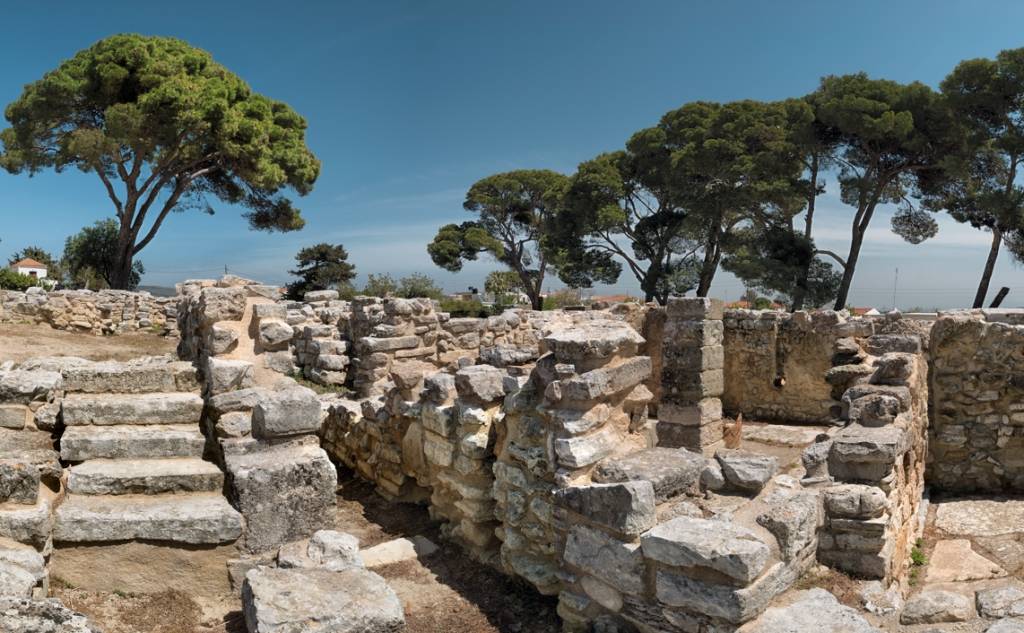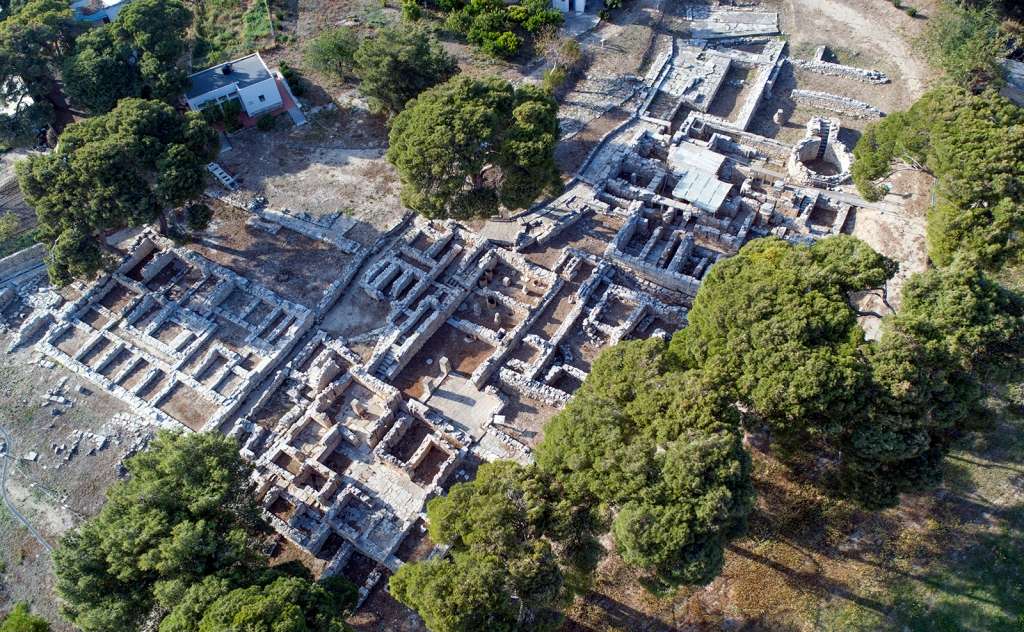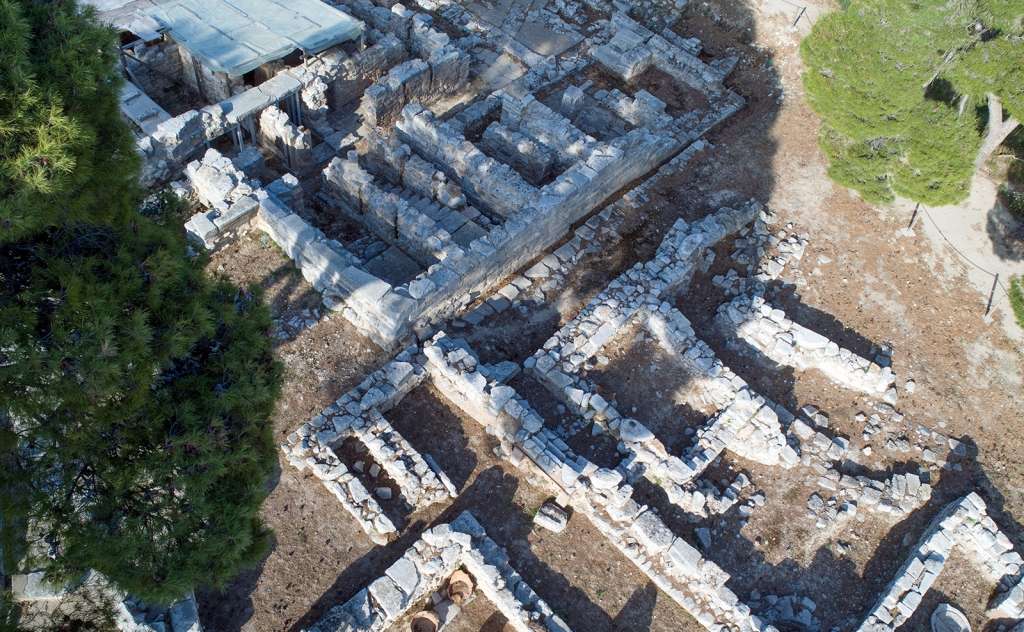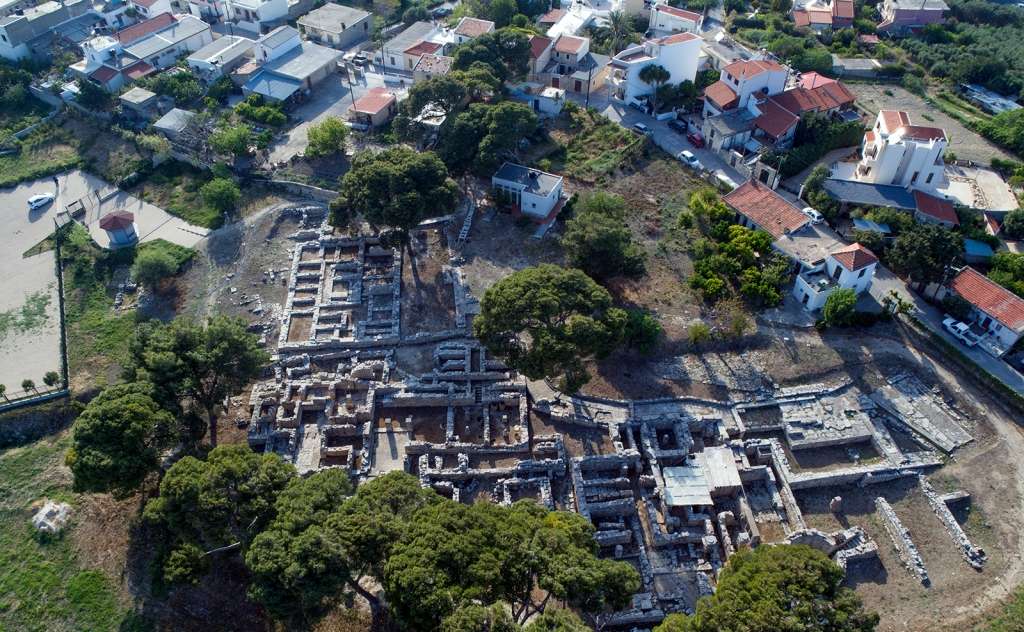The archaeological site of Tylissos
The archaeological site of Tylissos is located north of the present village of Tylissos, 16 km west of Heraklion. Here, the findings of an important, in wealth and extent, ancient Minoan city have been excavated. The location of ancient Tylissos was of great strategic importance. It was a passage to the Minoan centres of western Crete and controlled the wealth produced in the area of Psiloritis. The existence of the city seems to have started in the Pre-Palace period. It flourished during the Neo-Palace period (1650-1450 BC), at the end of which it was destroyed. It was rebuilt during the post-palace period (1450-1200 BC), where it prospered until 1200 BC. Tylissos, already in its heyday and in the next era, is very closely associated with Knossos. It is, in essence, the annexe of the capital. Also, after the collapse of the palace power in the big centres after 1200 BC, in Tylissos (as well as in Knossos), there continued to be a significant settlement.
The city's location was first identified in the early 19th century by travellers Pashley and Spratt, who were led to the site by the place name, the vast expanse of the city's ancient ruins, the coins that had been found, as well as from looted ancient tombs. In fact, in 1937, Pasley wrote that he had heard the place name of the ancient city from the inhabitants, and that was enough for him to understand that he already was in the area of ancient Tylissos. Sprat is more detailed in the description of Tylissos. He places the ancient city in the uppermost part of the area and is surprised by its privileged, advantageous, strategic location.
The first excavation was carried out in June 1912 by doctor and archaeologist Iosif Hatzidakis (one of the founders of the Archaeological Service of Crete and the Museum of Heraklion) after the accidental discovery of four large copper boilers by a resident of the village in 1906. The excavations lasted three years. During the 1940s, maintenance and restoration works began by the Curator of Antiquities, Nikolaos Platonas, in collaboration with craftsman Zacharias Kanakis. The works were completed sometime between 1951 and 1955. While fixing the successive paved roads, Piet de Jong discovered a new paved courtyard, while Piet de Jong made new plans for the mansions. The fixing works in all three Mansions were repeated from 1990 to 1994.
The most essential building findings of the excavations are three small palaces that have been named Megaron A, B and C. Their architecture is considered one of the most impressive in Minoan Crete, while they are equal to the other large palaces in Knossos, Phaistos, Malia, etc.:
Mansion A: It is the largest of the three and was excavated first in the 32 row. It consists of 24 rooms and other areas. Its dimensions are 35x18 meters, with an area of about 630 sq m. It is built of carved alabaster, and its entrance is in the middle of the east side. It is three-doored with two pillars and leads to a spacious room with a column in the middle (which served as a storage room). Inside, a bronze axe and golden leaves were found. Opposite the entrance, a door leads to the north staircase that ends on the first floor. A steatite lamp was found next to the entrance. To the north, there are warehouses with ceramic barrels that have been saved in place. Above the warehouses (upstairs), there were large meeting rooms. The southern part of the mansion is more complicated. Here, the multi-door mansion was the central architectural core of the Minoan palaces. Around it, all the other apartments are built. In the pillar crypt, with the paved floor, ceramic battels, clay vessels, bronze axes and other tributes were found. One of the most important findings was the bronze cast figurine of a worshiper. Significant findings were also contained in the warehouse, including three large copper boilers (unique in the entire Aegean) made of copper sheets with rivets. In the same room, the inscribed, engraved Linear A plates were found, as well as clay seals.
Mansion B: It has a less impressive appearance in the layout of its spaces. Its shape is rectangular. It was also a two-storey building. Among its findings, the most notable ones are the pits, the clay pots (compasses, pots, cups), a table of steatite made offerings and fragments of murals from the rooms upstairs. These miniature murals have striking similarities (thematic, stylistic) with the Knossos ones, so it is believed that the Knossos painters painted them.
Mansion C: There were two consecutive buildings in the location of Mansion C (north of Mansion A). The first belongs (along with Mansions A and B) to the era of the new palaces. The second was founded in the last Palace era (14th-13th century BC), one meter higher than the ruins of the Neo-Palace. The New Palace Building C was registered after its destruction in 1450 BC, approximately up to the height of the roof of its ground floor. It is smaller than Mansion A, and it has an irregular shape. Its entrance is to the east. The warehouses are located on the west side, while the residential apartments are located northwest. Interesting findings of Mansion C are the ceramic barrels in the warehouses, the fragments of frescoes from the upper floor, as well as the many clay vessels. Only a few relics were saved from the newer Mansion C, including two pillar bases, thresholds, a stone pipeline, a small stone tank, and a large circular built tank with a descending staircase. Clay aqueduct pipes, which carried the water from the current source of Agios Mama and still supply water to the village, were found 38 metres northwest of Megaron C.
Finally, the tombs of ancient Tylissos belong mainly to the last period of its prosperity (1400-1200 BC). Specifically, they belong to the chamber type and contain painted clay, box-shaped sarcophagi, clay vessels (cups, pots, piles, glass), and other gifts, such as jewellery and seals. Most of the findings today are in the Archaeological Museum of Heraklion.
Admission: 5.00 euros
For visitors under the age of 18: Admission is free
| MONDAY | 08:30 - 15:30 |
| TUESDAY | CLOSED |
| WEDNESDAY | 08:30 - 15:30 |
| THURSDAY | 08:30 - 15:30 |
| FRIDAY | 08:30 - 15:30 |
| SATURDAY | 08:30 - 15:30 |
| SUNDAY | 08:30 - 15:30 |






